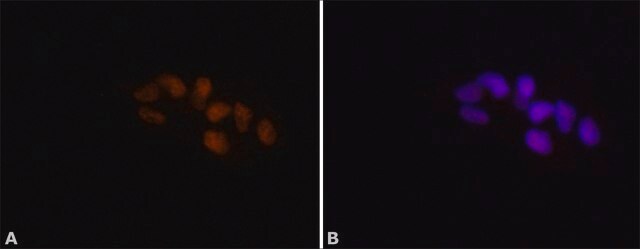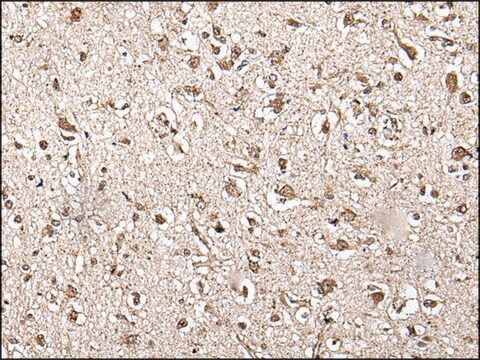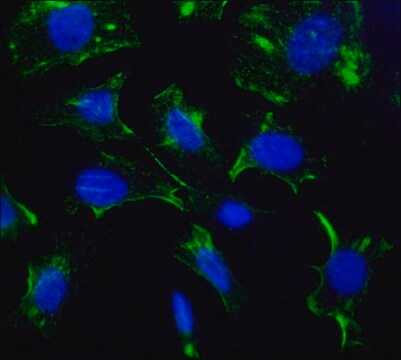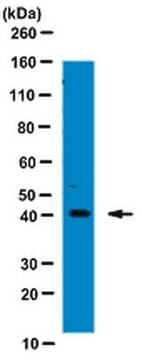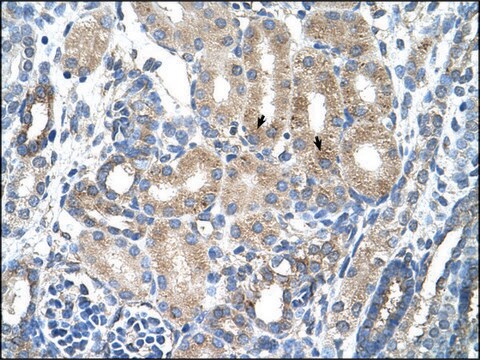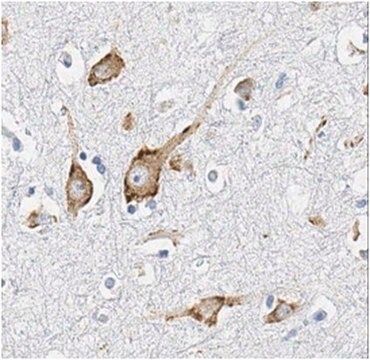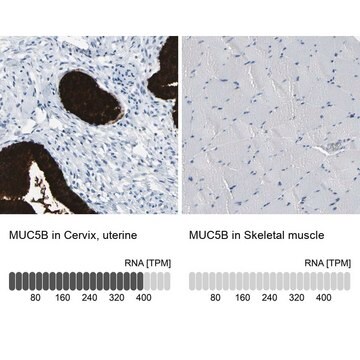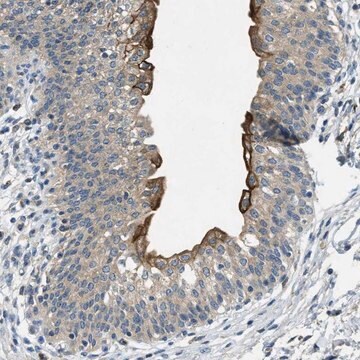Wichtige Dokumente
SAB4200565
Monoclonal Anti-ZFP36/TTP antibody produced in mouse
clone TTP6, tissue culture supernatant
Synonym(e):
Anti-G0/G1 switch regulatory protein 24, Anti-G0S24, Anti-Growth factor-inducible nuclear protein NUP475, Anti-NUP475, Anti-RNF162A, Anti-TIS11, Anti-TIS11A, Anti-Zinc finger protein 36 homolog, Anti-tristetraprolin, Anti-zinc finger protein 36, C3H type, homolog (mouse), Anti-zinc finger protein, C3H type, 36 homolog (mouse)
About This Item
Empfohlene Produkte
Biologische Quelle
mouse
Qualitätsniveau
Konjugat
unconjugated
Antikörperform
tissue culture supernatant
Antikörper-Produkttyp
primary antibodies
Klon
TTP6, monoclonal
Form
buffered aqueous solution
Mol-Gew.
antigen ~45 kDa
Speziesreaktivität
mouse, bovine, rat, dog, human, monkey
Methode(n)
western blot: 1:4,000-1:8,000 using extracts of HepG2 cells.
UniProt-Hinterlegungsnummer
Versandbedingung
dry ice
Lagertemp.
−20°C
Posttranslationale Modifikation Target
unmodified
Angaben zum Gen
human ... ZFP36(7538)
Verwandte Kategorien
Allgemeine Beschreibung
Immunogen
Anwendung
Biochem./physiol. Wirkung
Physikalische Form
Haftungsausschluss
Sie haben nicht das passende Produkt gefunden?
Probieren Sie unser Produkt-Auswahlhilfe. aus.
Lagerklassenschlüssel
10 - Combustible liquids
WGK
WGK 3
Hier finden Sie alle aktuellen Versionen:
Analysenzertifikate (COA)
Die passende Version wird nicht angezeigt?
Wenn Sie eine bestimmte Version benötigen, können Sie anhand der Lot- oder Chargennummer nach einem spezifischen Zertifikat suchen.
Besitzen Sie dieses Produkt bereits?
In der Dokumentenbibliothek finden Sie die Dokumentation zu den Produkten, die Sie kürzlich erworben haben.
Unser Team von Wissenschaftlern verfügt über Erfahrung in allen Forschungsbereichen einschließlich Life Science, Materialwissenschaften, chemischer Synthese, Chromatographie, Analytik und vielen mehr..
Setzen Sie sich mit dem technischen Dienst in Verbindung.